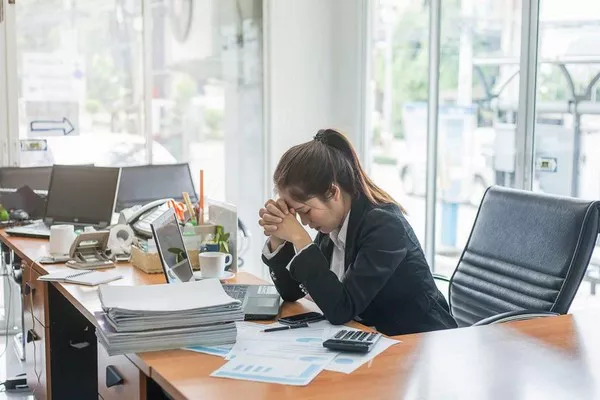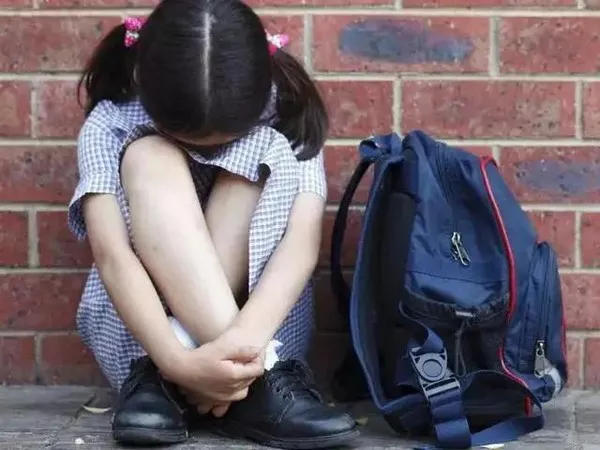Anxiety is a common emotional experience that affects millions of people worldwide. For some, it is an overt condition, making itself known through visible signs and behaviors. For others, anxiety is something that is kept hidden, concealed behind a mask of calmness or normalcy. While anxiety can manifest in a variety of ways, recognizing when someone is hiding anxiety is crucial, especially for friends, family, and colleagues who may want to offer support. Understanding the signs of concealed anxiety can help in offering the appropriate emotional support and interventions, even when a person is not openly expressing their struggles.
In this article, we will explore how to identify when someone might be hiding anxiety, the subtle signs that indicate an individual is coping with anxiety in silence, and the steps that can be taken to offer support to those who may be reluctant to share their experiences.
Understanding Anxiety and Its Many Forms
Anxiety is a natural response to stress, characterized by feelings of worry, nervousness, or unease. It is a normal reaction to certain situations, such as public speaking or preparing for an important exam. However, for some individuals, anxiety becomes chronic or excessive, leading to more frequent and intense feelings of dread, panic, or fear. Anxiety disorders, including generalized anxiety disorder (GAD), panic disorder, social anxiety disorder, and others, can make daily life difficult and interfere with an individual’s ability to function normally.
In many cases, people with anxiety are able to manage their symptoms without letting them affect their daily interactions. However, some individuals may feel ashamed or embarrassed by their anxiety and may go to great lengths to hide it from others. These individuals may put on a façade of calmness while internally struggling with racing thoughts, excessive worry, and physical symptoms of anxiety.
Why Do People Hide Their Anxiety?
There are several reasons why people may choose to hide their anxiety. These reasons can be deeply personal and may vary from person to person. Some common factors include:
Fear of Judgment or Stigma: Many individuals fear being judged or labeled as “weak” or “crazy” if they admit to experiencing anxiety. The stigma surrounding mental health issues can cause people to avoid seeking help or disclosing their struggles.
Desire to Appear Strong: Some individuals believe that showing anxiety is a sign of weakness. They may feel a sense of pride in being able to manage their emotions and not burden others with their problems.
Avoiding Attention: People who are socially anxious may avoid drawing attention to themselves and may go to great lengths to appear “normal” in social situations.
Denial or Minimization: Some individuals may not fully recognize the severity of their anxiety or may minimize their symptoms in an attempt to cope. They may not want to acknowledge that their feelings of worry or fear are having a negative impact on their lives.
Despite their efforts to conceal their anxiety, the signs are often still detectable to those who are familiar with the condition or who are attentive to subtle behavioral cues. Recognizing these signs can help create a more compassionate and supportive environment for those who are struggling in silence.
Signs That Someone Might Be Hiding Anxiety
While every individual’s experience with anxiety is unique, there are several common signs that can indicate someone may be hiding anxiety. These signs can be both emotional and physical, and they often manifest in ways that are not immediately obvious. Here are some key indicators to watch out for:
1. Overcompensation in Social Situations
Individuals who are hiding anxiety may overcompensate in social situations by appearing excessively confident, outgoing, or engaged. For example, someone who experiences social anxiety might engage in small talk more than usual, laugh loudly to mask discomfort, or take on a role of being overly helpful or “the life of the party.” This overcompensation is often a defense mechanism designed to divert attention from their internal struggles.
While this may seem like normal behavior, it’s important to observe if this energetic persona appears forced or unnatural. People who are hiding anxiety often go to great lengths to avoid showing vulnerability, which can lead them to overact in ways that seem out of character.
2. Increased Irritability or Short Temper
Anxiety can cause heightened sensitivity and irritability. If someone is concealing anxiety, they may appear more easily frustrated, short-tempered, or emotionally reactive than usual. Small inconveniences or stressful situations may trigger disproportionate emotional responses, such as snapping at others or becoming upset over minor issues.
This irritability is often a result of the individual’s heightened state of internal distress, and the outward reactions are a way of coping with the overwhelming emotions that anxiety produces. If someone who is usually calm and patient suddenly becomes irritable or quick to anger, it could be an indication that anxiety is at play.
3. Difficulty Making Decisions or Overthinking
A person hiding anxiety may exhibit difficulty making decisions, even about relatively small or insignificant matters. Anxiety often leads to overthinking and a paralyzing fear of making the wrong choice. As a result, individuals may second-guess themselves, avoid making decisions altogether, or defer to others to make choices for them.
In social settings, someone who is concealing anxiety may ask for reassurance or confirmation repeatedly, unsure of their decisions even if they appear trivial to others. The constant internal struggle between fear of making a mistake and the desire to avoid confrontation or disappointment can make decision-making seem like a daunting task.
4. Restlessness or Fidgeting
Physical manifestations of anxiety often include restlessness or fidgeting. While these signs may seem subtle, they can be telltale indicators that someone is dealing with anxiety. Fidgeting with hands, tapping feet, biting nails, or shifting in their seat constantly are all physical signs that an individual may be experiencing internal discomfort.
People who hide anxiety may become self-conscious of these behaviors, so they might try to suppress them, only to engage in less obvious activities like pacing, adjusting their posture frequently, or shifting their eyes. These signs of restlessness are an attempt to manage their nervous energy and reduce feelings of tension.
5. Avoidance of Certain Situations
Anxiety often leads people to avoid situations that trigger their fears or make them uncomfortable. While someone may not openly admit that they are avoiding certain situations due to anxiety, their actions can speak volumes. They might frequently cancel plans, make excuses to avoid social gatherings, or find reasons to stay home from work or school.
This avoidance behavior is often a subconscious attempt to protect themselves from overwhelming feelings of anxiety. It may also manifest as avoidance of specific people or topics of conversation that are linked to their anxiety triggers.
6. Complaints of Physical Symptoms
Anxiety often manifests physically, causing symptoms like headaches, stomachaches, dizziness, or tightness in the chest. These physical symptoms can be easily brushed off as unrelated to mental health, especially if the individual is trying to hide their anxiety. Someone might frequently complain about feeling unwell or report vague physical ailments, yet refuse to seek medical attention, possibly due to the fear of being perceived as “weak” or “needy.”
They may mention feeling tired, having trouble sleeping, or experiencing muscle tension, all of which can be indicative of anxiety but are often dismissed as normal stress or unrelated conditions. Chronic health complaints without a clear medical explanation may suggest an underlying anxiety disorder.
7. Constant Reassurance Seeking
People with anxiety often seek constant reassurance to ease their worries, even if the concerns seem unfounded. While this behavior might not be immediately obvious, individuals hiding their anxiety might subtly ask for validation or assurance from others. They may repeatedly check in with friends or family, asking for confirmation that everything is okay or that they are making the right decisions.
This reassurance-seeking behavior is often a result of intense fear of uncertainty and the desire to alleviate their constant internal worry. If someone you know frequently seeks validation or approval, it may be a sign that they are struggling with anxiety, even if they don’t directly acknowledge it.
8. Negative Self-Talk or Low Self-Esteem
People who hide anxiety may exhibit signs of negative self-talk or low self-esteem. They might downplay their accomplishments, express doubt about their abilities, or frequently criticize themselves. This self-deprecating behavior is often an attempt to mask feelings of inadequacy or insecurity, which are common in those struggling with anxiety.
Someone might also avoid taking on challenges or pushing themselves beyond their comfort zone, not because they lack the ability, but because they fear failure or judgment. This pattern of negative self-talk and avoidance can be an indicator of underlying anxiety, especially when it is disproportionate to the situation at hand.
How to Offer Support to Someone Hiding Anxiety
If you suspect that someone is hiding anxiety, it is important to approach the situation with empathy, sensitivity, and non-judgment. Here are some steps you can take to offer support:
Create a Safe and Open Environment: Let the person know that they are not alone and that it’s okay to talk about their struggles. Avoid pushing them to open up, but offer reassurance that you are available to listen whenever they feel ready to share.
Encourage Professional Help: While you can offer emotional support, anxiety is often best managed with the help of a mental health professional. Encourage the individual to seek therapy, counseling, or support groups to better manage their anxiety.
Be Patient and Understanding: People with anxiety may take time to open up and may not always respond to your efforts right away. Be patient and show understanding, even if they seem to withdraw or resist your attempts to help.
Offer Practical Support: In addition to emotional support, offer practical help where appropriate. This might include helping them with everyday tasks, encouraging relaxation techniques, or simply offering a distraction from their worries.
Respect Their Boundaries: People with anxiety may feel overwhelmed by too much attention or pressure. Respect their personal space and boundaries, and avoid pushing them to confront their anxiety before they are ready.
Conclusion
Anxiety is a complex and often invisible condition that can be difficult to recognize, especially when someone is hiding it behind a mask of normalcy. By being aware of the subtle signs of concealed anxiety, such as overcompensation in social settings, irritability, decision-making difficulties, restlessness, and physical symptoms, you can better support those around you who may be struggling in silence. Creating a supportive, non-judgmental environment and encouraging professional help are essential steps in helping someone manage their anxiety and find the relief they need to lead a fulfilling life.
Related Topics:



























